Panasonic Lumix DMC-FZ45 Review
Panasonic Lumix DMC-FZ45
Can Panasonic's new superzoom live up to its predecessor?
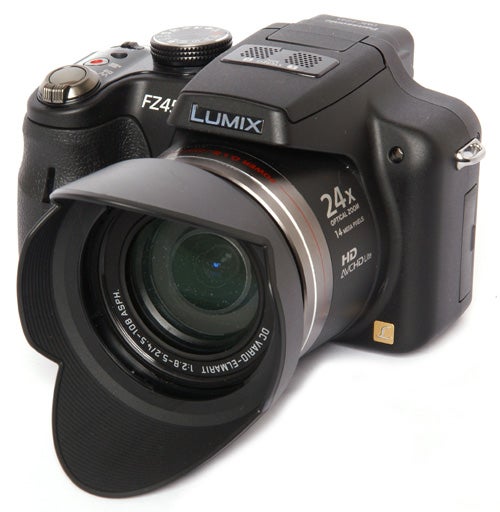
Verdict
Key Specifications
- Review Price: £359.00
Out of all of the thousands of reviews posted on TrustedReviews over the years, the one that has been viewed the most times, and by a surprisingly large margin, is the review of the Panasonic FZ38 super-zoom which I wrote last July. Bearing that in mind I’m fairly sure there’ll be quite a few people who will be interested in today’s review, because I’m taking a look at the FZ38’s successor, the new Panasonic Lumix DMC-FZ45, which was launched this July. 
Just as the FZ38 was an incremental upgrade from the previous year’s FZ28, the FZ45 has many similarities to the previous model, but also a number of significant improvements. The two most obvious changes are the lens, which is increased from an 18x zoom to a larger f/2.8–5.2 24x zoom equivalent to 25 – 600mm, and the sensor, which is still a small 1 /2.33-inch chip but has had a resolution increase from 12.1 to 14.1 megapixels. The SLR-like body design hasn’t changed much since the FZ7 launched in 2006, although the new camera is slightly larger and somewhat heavier than the FZ38, and has seen a major revision to the control layout. The fixed wide-view LCD monitor is also slightly larger, expanding from 2.7 inches to 3.0 inches, but retaining the same 230k resolution. Most of the FZ38’s main features have been retained, particularly its 1280 x 720 HD video mode with stereo audio and AVCHD Lite recording format.
In fact the FZ45 is one of two successors to the FZ38. Launched at the same time was the FZ100, which has the same 24x zoom lens and 14.1-megapixel resolution, but has a higher performance MOS sensor, a fully articulated 3.0-inch 460k monitor and 1920 x 1080 full HD (1080i) video recording in AVCHD format. The FZ100 is very much the premium model of the two, with a price tag of £479 compared to the FZ45’s £359.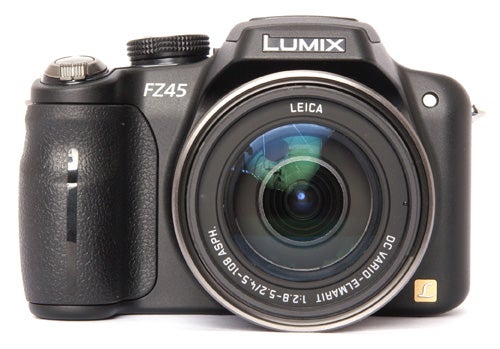
Although super-zooms have seen their traditional role as “bridge cameras”, standing between compacts and DSLRs, usurped by the latest compact system cameras, there are still quite a few of them around and the FZ45 faces some formidable competition. Notable examples include the excellent value Pentax X90 (£230), the Nikon P100 (£280), the Samsung WB5000 (£280) and the immensely impressive Fujifilm S200EXR (£315). Against these market rivals the FZ45 looks pretty expensive, and the FZ100 even more so.
Although the body design of the FZ45 looks virtually identical to the FZ38, in fact it has been completely revised. It is several millimetres larger in every dimension, and weighs 498g fully loaded, over 80g heavier than the previous model. The body is all plastic apart from the metal collar around the lens barrel, but the build quality is well up to Panasonic’s usual high standard, with tight joint seams, well fitting hatches and solidly mounted controls. The SLR-like shape includes a large handgrip and a small rear thumbgrip both covered with a leather-textured soft plastic, and the camera is comfortable and secure to grip even one-handed.
Despite the camera’s slightly larger dimensions, the increased size of the monitor screen means that there’s actually slightly less room for the rear panel controls, but changes to the control layout mean that they are just as uncluttered and easy to use. The most noticeable control change is the replacement of the FZ38’s joystick adjustment control with a more conventional input wheel located at the top right of the rear panel, right under the user’s thumb. This is used for adjusting exposure settings or exposure compensation depending on the shooting mode, and can also be pressed in to switch between aperture and shutter speed. It is much simpler and more intuitive than the old four-way control. There is now a separate button to access the comprehensive Quick menu.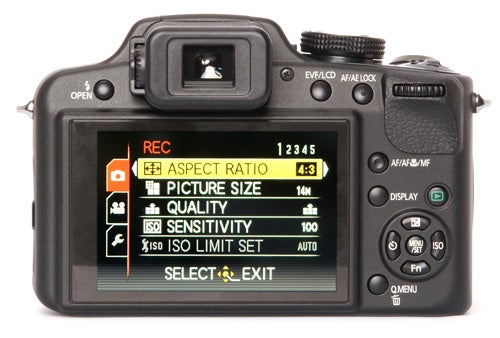
Another minor but welcome change is the replacement of the previous slider switch with a simple button to access playback mode. The camera now has “shooting priority”, meaning that it will switch instantly back to shooting mode as soon as the shutter button is half-pressed. The on/off control is still a slider switch, located as before on the top panel, but the dedicated video recording button has been relocated to a more logical position on the top panel just behind the shutter button.
Main shooting mode selection is, as always, via a large mode dial on the top panel. This is mostly unchanged, with the usual program auto, aperture and shutter priority and full manual exposure options, as well as Panasonic’s Intelligent Auto mode. There are several scene modes on the top dial, with options for portrait, scenery, sports, close-up and night portrait, each of which has several sub-options for specific conditions. As well as these there is a scene mode option, giving the FZ45 a total of 48 different scene programs, which to be honest might be too many.
Other shooting options are equally thorough. The menu offers four aspect ratios, including 1:1 square format, with six image sizes in each, providing a bewildering array of image formats. As well as this the camera offers Raw mode, Raw + JPEG and two JPEG compression settings. 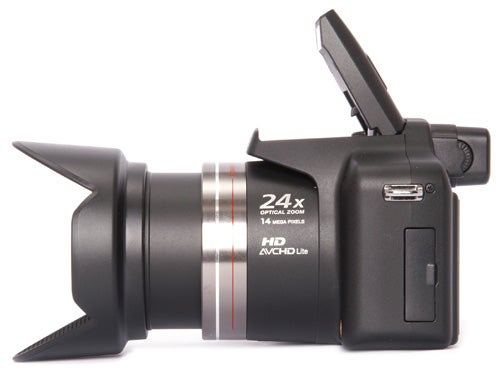
The camera also offers Panasonic’s Intelligent Resolution technology, although this is yet another attempt to repackage the dreaded digital zoom as a useful feature. It enhances edge detail in digitally zoomed shots, but the results are still far from ideal. With such a massive optical zoom range, why would anyone need to use digital zoom too?
The new lens is impressive to say the least. It is physically larger than that of the FZ38, with a wider front element, allowing it to keep its fast f/2.8 – f/5.2 maximum aperture despite the increase in focal length. With a wide end equivalent to 25mm and a long end of 600mm it offers a good combination of extreme wide angle and super-powerful telephoto. However it’s not alone in this; the Pentax X90 and Nikon P100 both offer 26-676mm equivalent with f/2.8 – f/5.0. 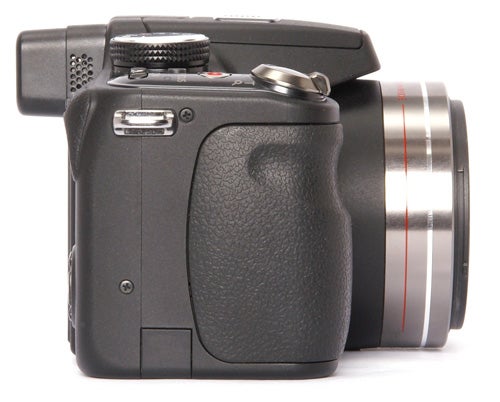
Internally the FZ45 has seen fewer changes. The shutter system is the same, unchanged at 60-1/2000th of a second. It still has the very effective Power OIS optical image stabilisation system, and the video recording mode is also the same. It offers a maximum resolution of 1280 x 720 at 25fps (for the PAL version) recording in the high quality AVCHD Lite format. Sound is recorded in stereo via two microphones mounted on top of the flash housing, with Dolby Digital Stereo Creator and optional wind cut filter. Both sound and video quality are very good.
The FZ45’s overall performance is excellent. It starts up and is ready to shoot in less than two seconds, and shuts down again just as quickly. In single-shot mode and Fine JPEG image quality it has a shot-to-shot time of 1.2 seconds, which is very quick by any standard, and faster than the FZ28. Shooting in Raw or Raw + JPEG mode however the performance was not so good, in fact attempting to shoot two quick consecutive frames in this mode caused a fatal write error and crashed the camera with every memory card that I tried, including one of Panasonic’s own ultra-high-speed Class 10 cards. To be fair though this may be a firmware problem with the early production sample I was testing.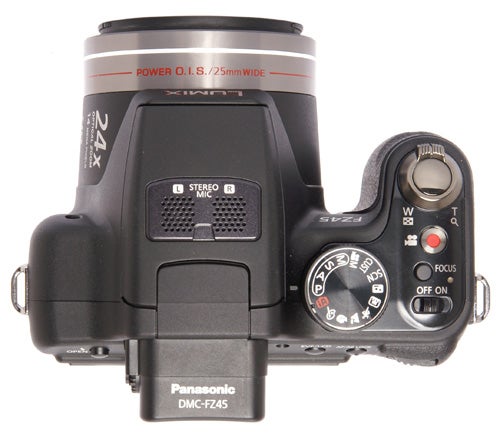
Like the FZ38 the FZ45 doesn’t have a long-period continuous mode, just a fairly slow 1.8fps burst mode which is limited to three frames in fine mode or five in standard mode regardless of image size. This option is not available in Raw or Raw + JPEG.
The FZ45’s autofocus system appears to be the same as the FZ38, but this is no bad thing. It is extremely fast and reliable, with very good low light performance, focusing just as quickly in twilight as in full daylight. It has a good bright AF assist lamp with an effective range of around four metres, and focuses with this very quickly even in total darkness.
The main selling point of the FZ38 was its outstanding picture quality, and I’m sure the same will be true of the FZ45, however I wouldn’t advise any FZ38 owners out there to trade up just yet. The lens quality is of course superb, as we’ve come to expect from Panasonic’s Leica-branded optics. In Raw or low-compression JPEG mode the level of fine detail is comparable to a DLSR, and even at the 25mm wide angle end the lens produces almost no optical distortion and excellent corner-to-corner sharpness, with no trace of chromatic aberration.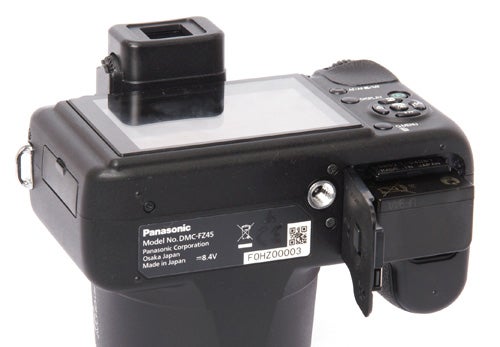
Colour reproduction is very good, exposure and focusing are accurate and reliable, but the FZ45 is nor without a couple of problems, predictably the result of the increased sensor pixel density. Even using the Intelligent Exposure mode the dynamic range is quite limited, with poor shadow detail, but it is the image noise problems that are the biggest cause for concern. The FZ38 had virtually flawless image quality at 200 ISO, and produced acceptable results even at 800 ISO. Sadly the FZ45 cannot match this performance. Quality at 80 ISO is unquestionably very good, but there are small but visible blotches of colour distortion even at 100 ISO. The image quality at 400 ISO is no better than its main rivals, and at 800 ISO the noise reduction has blurred out almost all fine detail. It is very disappointing that Panasonic has chosen to sacrifice the outstanding image quality of one of its most popular cameras for the sake of a pointless increase in image resolution.
”’Verdict”’
The Panasonic FZ45 is a superbly designed and very well made super-zoom camera that is absolutely loaded with advanced features. It has comfortable handling, excellent performance in all lighting conditions, and is a real pleasure to use. In general use the image quality is very good, but disappointingly its high-ISO performance and dynamic range are inferior to its predecessor the FZ38.
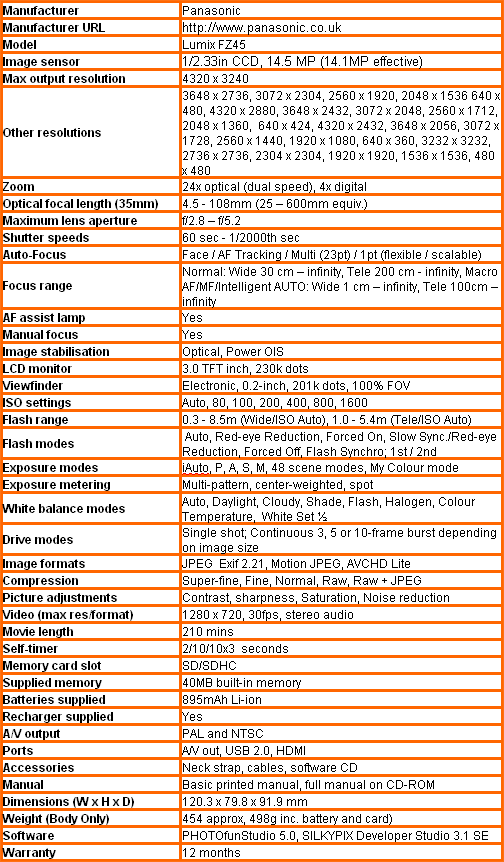
”Over the next few pages we show a range of test shots. On this page the full size image at the minimum and maximum ISO settings have been reduced to let you see the full image, and a series of full resolution crops have taken from original images at a range of ISO settings to show the overall image quality. These pictures were taken indoors using reflected natural light ”
—-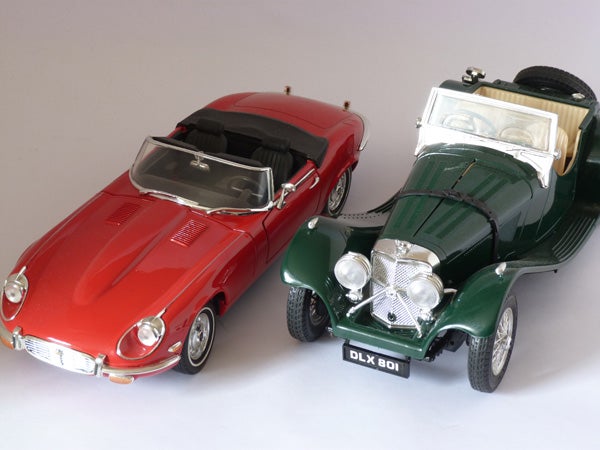
This is the full frame at 80 ISO.
—-
At the minimum ISO setting the image quality is undeniably good, but you’ll want to compare it with the results from the FZ38.
—-
There is a slight unevenness in the red colour gradient at 100 ISO.
—-
Noise reduction has introduced some speckling at 200 ISO.
—-
Detail is reduced and noise reduction more apparent at 400 ISO.
—-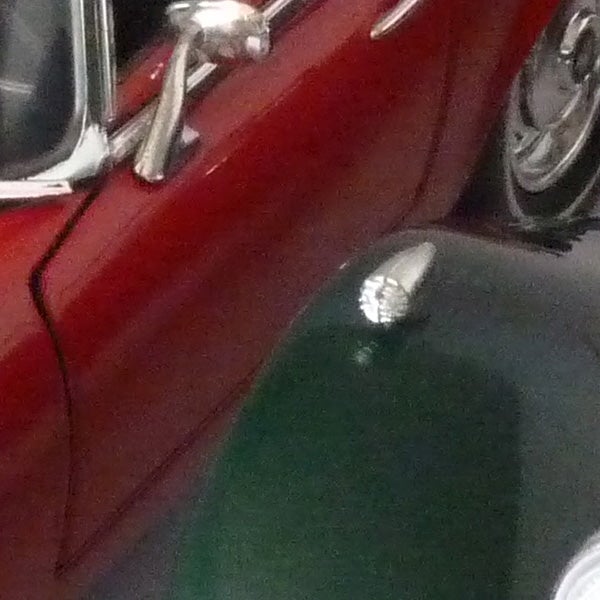
Image quality is really suffering at 800 ISO.
—-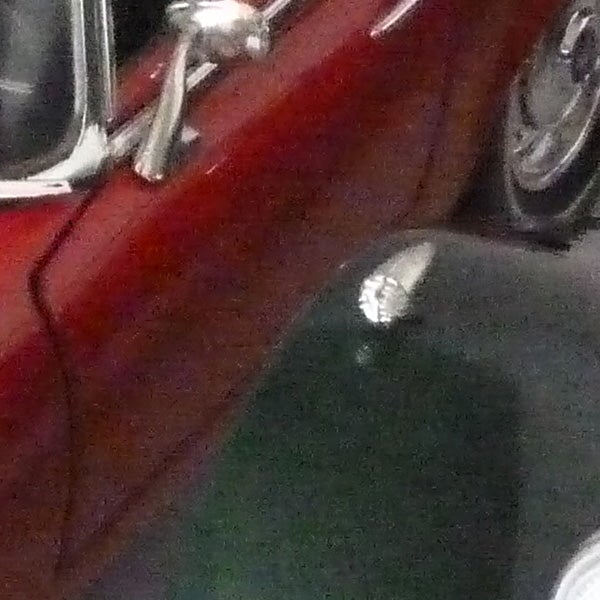
At 1600 ISO the image quality is very poor.
—-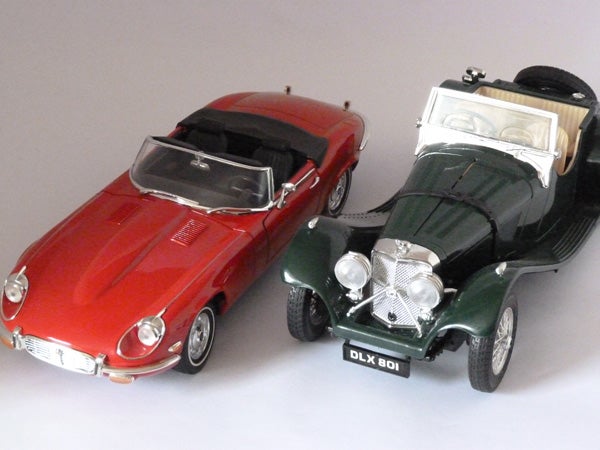
This is the full frame at 1600 ISO.
—-
”A range of general test shots are shown over the next two pages. In some cases, the full size image has been reduced for bandwidth purposes, and a crop taken from the original full resolution image has been placed below it to show the overall image quality. Some other pictures may be clicked to view the original full-size image. ”
—-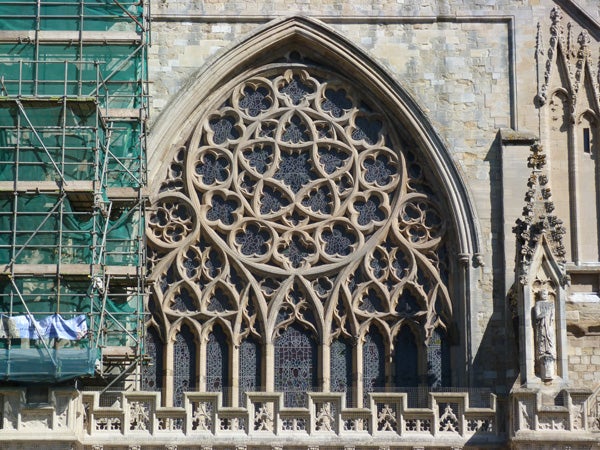
Here’s the usual detail test shot of the West Window of Exeter Cathedral, for you to compare with other cameras. See below for a full res crop, or click to see the whole picture. File size 5.3MB
—-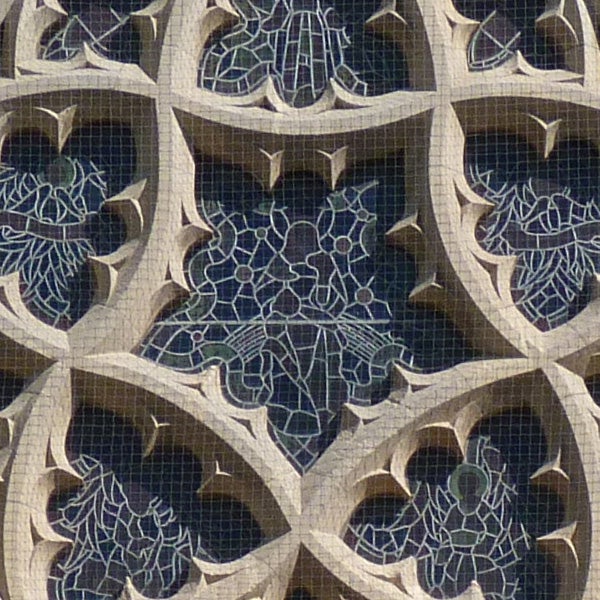
The level of fine detail is comparable to a good digital SLR.
—-
The Leica-branded lens produces almost no barrel distortion even at 25mm.
—-
Centre sharpness is excellent.
—-
Corner sharpness is also very good, with minimal blurring and no chromatic aberration.
—-
”Here are some general test shots to help evaluate the camera’s overall image quality, including dynamic range, colour rendition and the zoom range of the lens. Some pictures may be clicked to download the full size original image. ”
—-
The wide angle end is equivalent to 25mm.
—-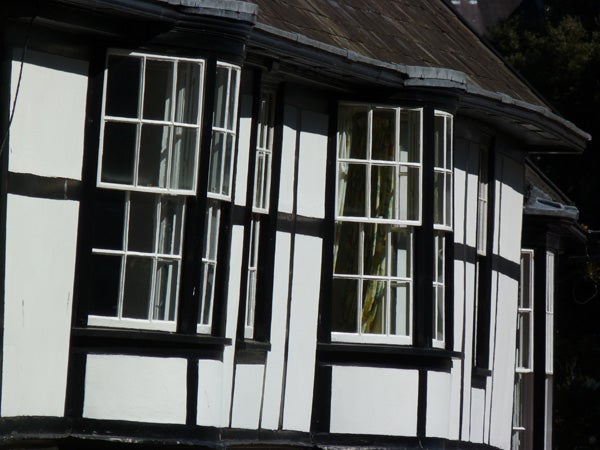
The telephoto end is equivalent to 600mm.
—-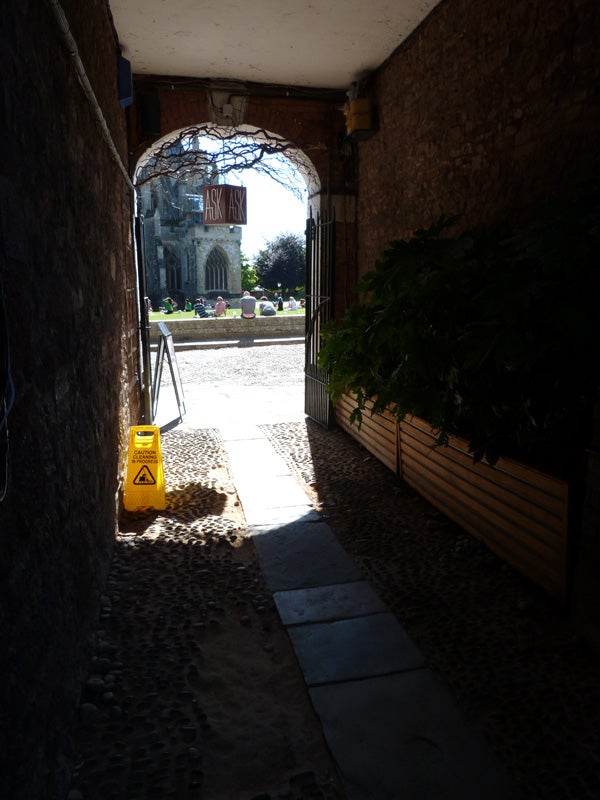
In standard program auto mode the dynamic range is very restricted.
—-
Using the Intelligent Exposure mode improves shadow detail a little.
—-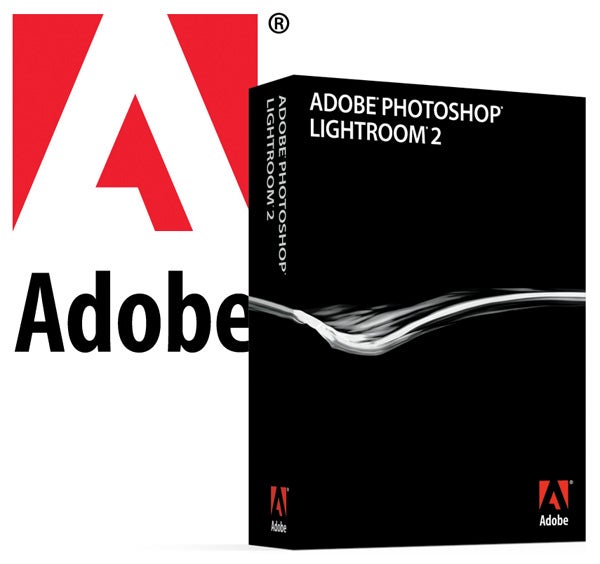
Colour reproduction is very good.
—-
Trusted Score
Score in detail
-
Value 8
-
Image Quality 9
-
Build Quality 9
Features
| Camera type | Super Zoom |
| Megapixels (Megapixel) | 14.1 Megapixel |
| Optical Zoom (Times) | 24x |
| Image Sensor | 1/2.33-inch CCD |
| Optical focal length | 4.5 to 108mm |
| Shutter speed | 60 secs to 1/2000 |
| Auto focus | Face/ AF Tracking/ Mutli/ 1pt |
| Manual focus | Yes |
| Max output resolution | 4320x3240 |
| Other resolutions | 3648x2736, 3072x2304, 2560x1920, 2048x1536, 640x480, 4320x2880, 3648x2432, 3072x2048, 2560x1712, 2048x1360, 640x424, 4320x2432, 3648x2056, 3072x1728, 2560x1440, 1920x1080, 640x360, 3232x3232, 2736x2736, 2304, 2304, 1920x1920, 1536x136, 480x480 |
| Focus range | Normal: wide 30cm to infinity, tele 200cm to infinity, macro AF/MF/intelligent/ AUTO: wide 1cm to infinity, tele 100cm to infinity |
| Exposure control | P, A, S, M |
| Exposure metering | Multi, centre-weighted, spot |
| Image Stabilisation | Optical, Power OIS |
| ISO settings | Auto, 80, 100, 200, 400, 800, 1600 |
| LCD Monitor | 3-inCH 230k dots |
| Viewfinder | Electronic 0.2-inch, 201k dots, 100% FOV |
| Flash range | 0.3 to 8.5m (Wide, ISO, Auto), 1 to 5.4m (Tele, ISO Auto) |
| Flash modes | Auto, Red-eye reduction, Forced On, Slow Sync, Forced Off, Flash synchro |
| White balance modes | Auto, daylight, cloudy, shade, flash, halogen, colour temperature, white set 1/2 |
| Drive modes | Single-shot, Continuous, 3,5 or 10-frame burst depending on image size |
| Image formats | JPEG, Motion JPEG, AVCHD Lite |
| Picture adjustments | Contrast, sharpness, saturation, noise reduction |
| Video (max res/format) | 1280x720, 30fps |
| Movie length | 210 mins |
| Self timer | 2/10/10x3 secs |
| Memory card slot | SD,SDHC,SDXC |
| Supplied memory | 40MB built-in memory |
| Batteries supplied | 895mAh Li-ion |
| Charger supplied | Yes |
| A/V output | PAL and NTSC |
| Charging/Computer Connection | USB 2.0 |
| HDMI | Yes |
| AV Out | Yes |
| Manual | Printed basic guide, full manual on CD |
Physical Specifications
| Dimensions Width (Millimeter) | 120.3mm |
| Depth (Millimeter) | 79.8mm |
| Weight (body only) (Kilogram) | 454g (498 including battery and card)kg |

